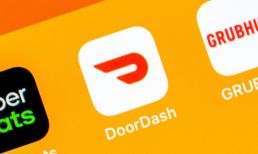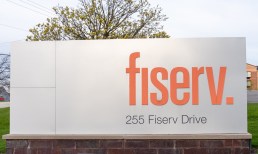For eCommerce retailers of all geographies, sizes and stripes, the world has become their marketplace. As such, it promises limitless scale and opportunity, most of which has focused on the B2C side of the ledger. But for B2B companies, the same promise exists. B2B marketplaces can connect companies across borders, and have also created direct relationships between retailers and wholesalers, especially in the wake of the pandemic.
But for the unaware, global B2B trade has its hidden obstacles. Cross-border payments and trade regulations must be respected and integrated. And B2B transactions have traditionally been processed through dedicated billing and payment systems. But the number of payment schemes available multiplied by the countries involved can prove to be a big global headache.
Limonetik was created as a white-label solution to help firms streamline that emerging complexity on the global stage, via an API that aggregates multiple financial flows into one settlement, and supports these services with reconciliation and reporting tools. As CEO Christophe Bourbier told Karen Webster in a recent conversation, the realities and possibilities of B2B payments are an urgent matter for companies looking to enter the global marketplace.
For B2C retailers, open banking has made cross-border trade and payments a more transparent experience than just a year ago. Contrast that with the world of B2B payments, where no one is enjoying the antiquated, slow, confusing and opaque payments that currently define these spaces at present. The experience of doing something that should be simple, Bourbier said, like setting up a cross-border bank transfer, can be a certifiable “nightmare” for firms.
And that’s just the start of the frictions trapping literally trillions in value annually. It’s also a significant use case for instant payments pushed via the open banking rails, and could eventually ignite the B2B sector.
“I think it’s just the beginning of a long and exciting journey,” Bourbier predicted. “This is a question of a less costly payment method to manage, because reconciliation is easier, settlement is quicker and control is better. There is nothing less controllable than a SWIFT payment. You know when you issue it, but you never know when it’s really going to arrive. And so, for all those reasons, it’s going to be very appealing for merchants.”
Advertisement: Scroll to Continue
And not just to large, enterprise-scale players pushing massive sums, but also small businesses looking to expand their reach worldwide in a way that is actually manageable and profitable.
For Limonetik, the B2B/B2C divide isn’t relevant when it comes to choosing the firms they serve in building the correct payment solution for their needs. The firm’s focus now and going forward, Bourbier said, will be serving “very cross-border or very international clients” based on the specific needs of the customized roadmap they designed for the customer base they are trying to service.
And it’s a landscape that is only going to get more complicated, he said. As Bourbier and Webster have previously discussed, there are 500 to 600 possible payment methods out there in the world today, and 300 to 350 that a merchant can in some context consider a must-have for their site. Bourbier believes the key for B2B marketplaces will be simplicity, which is hard to come by with so many payment choices, including SEPA and SWIFT payments.
That ease of use and simplicity, he said, will be critical in capturing what are essentially new and emerging payment flows for banks, enabling upcoming innovations in digital payments between businesses. As Bourbier and Webster agreed, the potential rewards are quite rich worldwide in terms of capturing new payments volume in underserved fields.
The Open Banking Factor
Webster and Bourbier also discussed the future of open banking, especially as it intersects with instant payments. As open banking unfolds in Europe, it is building a set of new rails on an idea that has been pioneered and developed by the card networks for the last half-century or so.
“What [the card networks] enable is for a merchant to have a payment validated and to ask the bank cardholder to send the money in his bank account,” Bourbier said. “The open banking dynamic that we have in Europe will enable third parties like merchants to take payments – and maybe it’s a Visa and Mastercard account type of solution, but without Visa or Mastercard.”
Or at least it could enable such a thing if certain conditions are met – the main condition being that open banking actually exists with real ubiquity. Having open banking available at a handful of banks won’t work – every bank in Europe will more or less have to be on board. And initiating payments is only part of the process. It is separate from also making those payments instant and able to be transmitted safely in under 10 seconds of clicking “send.”
It’s complicated, noted Bourbier, and it will only get more so as things like cryptocurrency continue to go online. Crypto is not there yet, he said, as it would need to gain traction in businesses like retail, travel and B2B payments. But that doesn’t mean crypto is something that Limonetik – or anyone else who is serious about building for the future of payments – can afford to sleep on, either.
“It’s going to happen for sure, there is no doubt about that,” predicted Bourbier. “We don’t see that yet in very traditional verticals or industries, but it’s going to come for sure. Five years, 10 years, that could be the wait, but it’s going to happen.”
In fact, a lot of things are going to happen, and are in many cases already underway as payments experiences a great digital reformation. Merchants can’t fight the change, said Bourbier, but they can find better, smarter and even occasionally newer ways, powered by smarter payments.
The potential power in pushing a B2C product leveraging open banking and instant payments has a lot of obvious benefits, particularly for merchants. With lower costs and without the same risk of chargebacks, the open, instant rails represent a big opportunity for merchants to have a more efficient payment system. On the other side, Bourbier said, one could imagine building a stickier user experience than today’s card products



